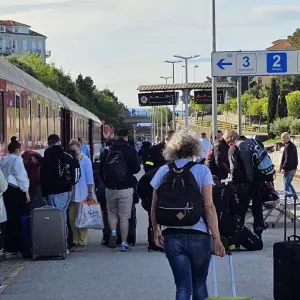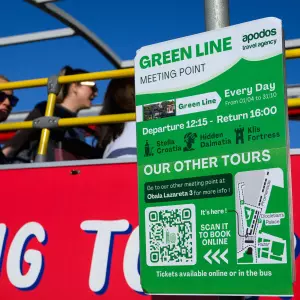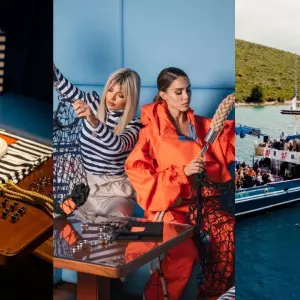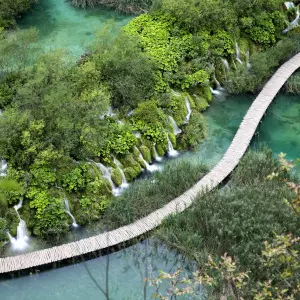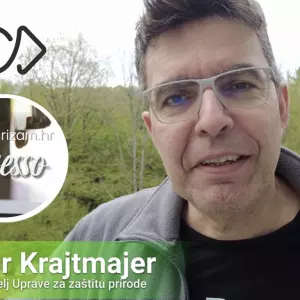In a recent interview for Croatian tourism, the director of the Međimurje Tourist Board, Rudi Grula, pointed out that as a destination they are trying to stimulate guests who come to Međimurje by car to leave their cars in the parking lot.
"We organized a 'hop on - hop off bus' throughout the county, which is not commercial, which we as a tourist board co-finance and give a message to guests: leave your car. We have 888 km of organized bicycle paths, 300 km of footpaths. All the messages go towards this: ok, now you released CO2 to come to us, but here you have the opportunity to be ecologically sustainable". Grula stated.
EXAMPLE 1: Bus on the move
Otherwise Hop on, Hop off bus (HOHO) or Bus on the move is a textbook example of strategic tourism development, which was introduced for the first time in Croatia, even in Europe, for one entire destination. The goal is to transport or connect all tourist attractions and thereby significantly raise the quality of the destination offer to a higher level. Also, since the line is regular, guests can rely on the fact that the bus will actually come.
You leave the car and start exploring the destination. Great story. In this way, we directly increase tourist consumption, connect targeted attractions and stakeholders, and most importantly - we directly influence the increase of the overall satisfaction and experience of the guest. Because in the end, the reason for coming is the destination, not the bed.
Of course, it would be great if the bus/van was electric. And it will be in the future.
EXAMPLE 2: From the Split waterfront towards Dalmatinska zagora
In another part of Croatia, we also have a similar interesting story - GREEN LINE.
A little further south, in central Dalmatia, i.e. Split-Dalmatia County, we have a similar excellent project of a tourist bus line - the "Green Line" which departs every day at 12:01.04 (from 31.10 to XNUMX) from the Split waterfront towards Dalmatinska Zagora.
The first stop is Dugopolje, the Visitor Center, which will also be the starting point for excursions around the Dalmatian Zagora. There will be an information center where tourist agencies will be able to advertise with all their offers, from gastronomy to adventure to religious and historical tours. The line goes on through Klis and ethno-agro park Stella Croatica and returns to the ancient Salona to the starting point.
Redistribution of tourists towards the interior, i.e. the rural area, which is full of tourist stories and experiences. The added value is the same as in the story from Međimurje: additional consumption, better guest satisfaction.
I would reduce the conclusion to a couple of key words: strategic development, management, market penetration, redistribution of money and experiences towards the rural area.
It is this quality tourism with added value that we must strive for.
View this post on Instagram
The key element of these stories is that they were created in cooperation between the public and private sectors - they were initiated by the Tourist Board (TZ) and the county with the private sector.
And this is a model, and in my opinion, one of the primary tasks of TZ, how to start new tourist facilities and reverse tourist flows, as in the examples mentioned, is the most important aspect. From the redistribution of tourists to new locations to the extension of the season.
The question is when and how long it would take for the same products to be received on the market and be profitable, because it is a long-term process with a lot of investment in promotion and various collaborations, branding... in order for similar projects to come to life on the market. That is why there is often no great interest of entrepreneurs to start out on their own because there are too many factors that they do not directly influence.
These are processes and products that would hardly or never be profitable on the market if they were not initiated and co-financed by the public sector at the start. When the project comes to life on the market and everyone in that chain benefits - and that is financial income, then we can say that the project is finished and that the goal has been met. It often takes three to five years, but everything depends on various factors and each project has its own specifics.
Several entrepreneurs in the entire chain are involved in projects like this. From the DMC agency, transporters, guides, museums, rural households, various OPGs and producers of cheese, prosciutto, winemakers, etc... and everyone in that chain then benefits from tourism.
This can hardly happen if we leave everything to the market. Because as we know, the most money and the least effort is on the coast, or it is easier to sell the sun and the sea than the rural area - figuratively speaking. And this is legitimate and normal for entrepreneurs, because they have to make a profit. That is why such projects are difficult to implement, especially since they have to be developed over several years, without the public sector.
And that is the path to strategic development.
Targeted projects that have their own head and tail and a clear task. The public sector has resources like the most important one, financially, and the imperative is not profit, but development. And that is key in projects like this, to start them first, gather and connect all stakeholders, and push them on the market. In addition to promotion, the public sector can also do this through targeted subsidies to agencies, promotional campaigns, linking other tourism products, etc.
Let's say, if we encourage and co-finance agencies to make tours to rural areas with the goal of at least one overnight stay, then we can also bind them to use one of the "palettes" of contents that must be included in the package, in order to receive support. Ultimately, we have to make a ready-made attractive tourist product, involve as many stakeholders as possible and encourage it so that it becomes market self-sustainable over a certain period of time.
These two examples in Međimurje and Split-Dalmatia County are such examples. Of course always better or different, but the products are on the market and they work.



